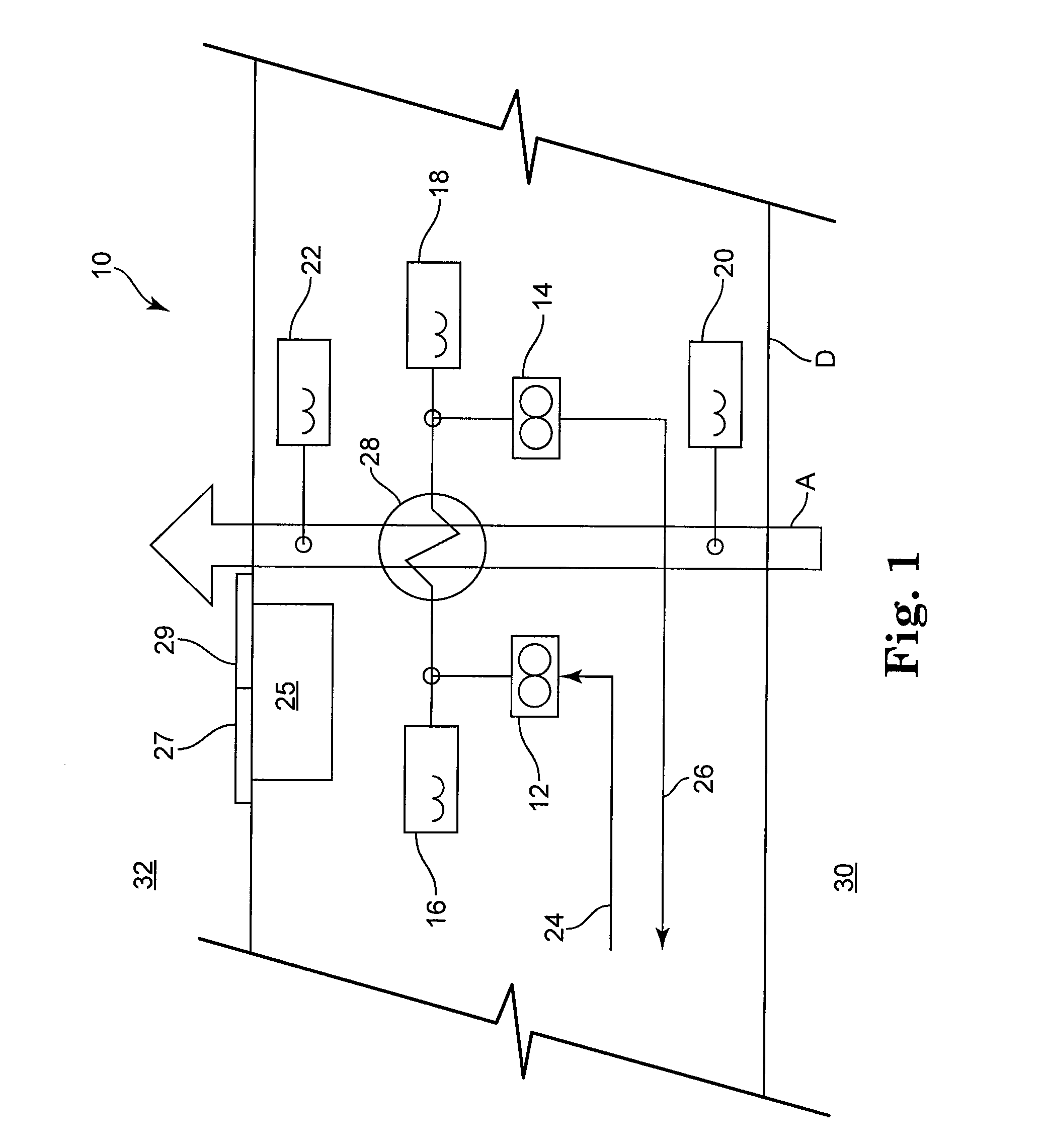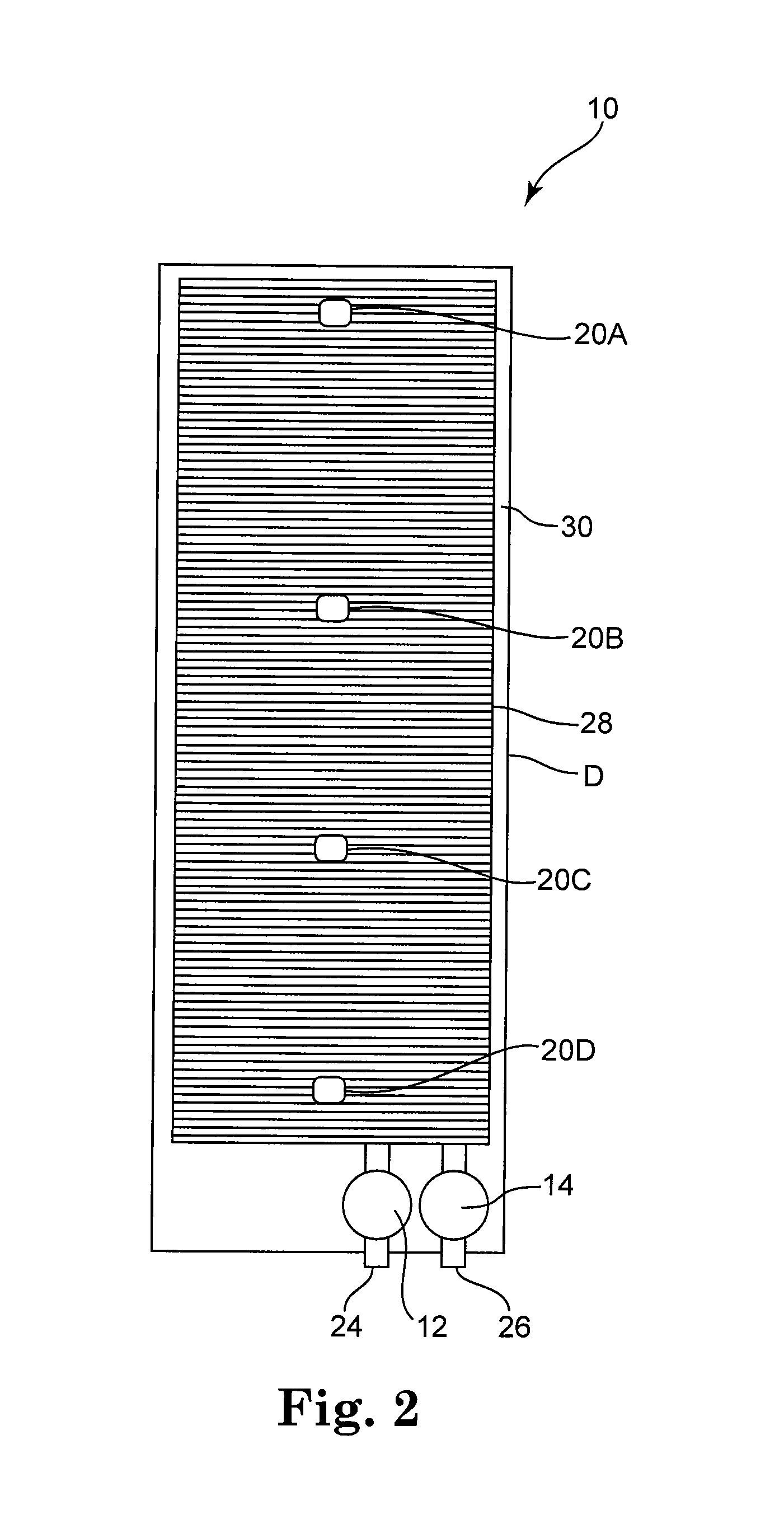Rear door heat exchanger instrumentation for heat quantity measurement
a heat exchanger and instrumentation technology, applied in the field of heat management, can solve the problems of increasing the heat load proportionally, the need for an external monitoring system to detect failures, and the inability of historically installed heating, ventilating and air conditioning systems to keep up with this growth, so as to reduce the flow of heat transport medium, increase the load level of the rack mounted computer system, and increase the air flow
- Summary
- Abstract
- Description
- Claims
- Application Information
AI Technical Summary
Benefits of technology
Problems solved by technology
Method used
Image
Examples
Embodiment Construction
[0009]The present invention will be described in detail with reference to the figures below. However, generally speaking, the present invention is a rear door heat exchanger system having built-in sensors and a microcontroller with a central operator panel and display configured to measure temperature differences between the inside and the outside of the rear door, heat transport medium temperature, and flow rate. The microcontroller may be designed to consolidate and archive the measured data. By mounting the operator panel and display to the outside of the door, the working state may be monitored easily and at one location. Benefits provided by the integration of such a control system include, but are not limited to: measuring, archiving, and displaying the heat capacity dissipation of the heat exchanger; measuring, archiving, and displaying the proper operation of the heat exchanger; alerting operating personnel of failures in the system, such as by using blinking lights, sound a...
PUM
 Login to View More
Login to View More Abstract
Description
Claims
Application Information
 Login to View More
Login to View More - R&D
- Intellectual Property
- Life Sciences
- Materials
- Tech Scout
- Unparalleled Data Quality
- Higher Quality Content
- 60% Fewer Hallucinations
Browse by: Latest US Patents, China's latest patents, Technical Efficacy Thesaurus, Application Domain, Technology Topic, Popular Technical Reports.
© 2025 PatSnap. All rights reserved.Legal|Privacy policy|Modern Slavery Act Transparency Statement|Sitemap|About US| Contact US: help@patsnap.com



